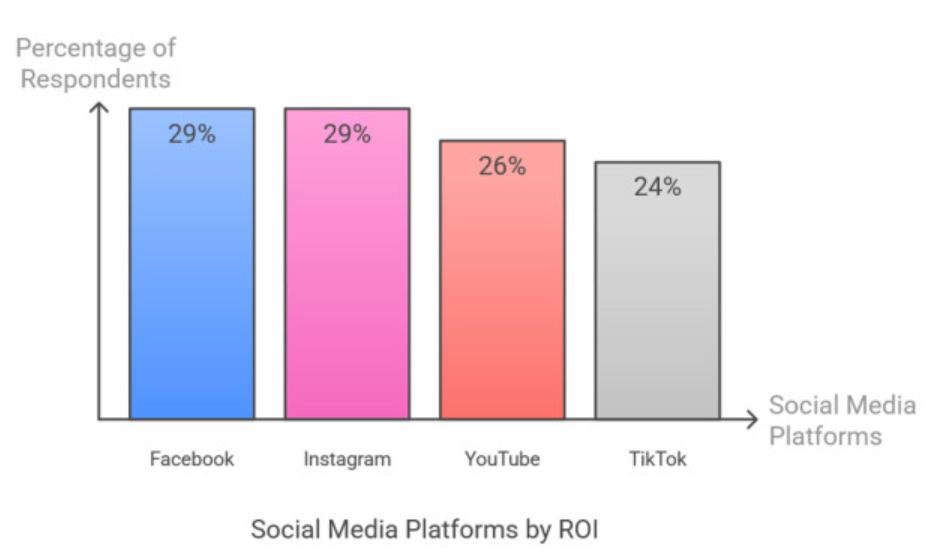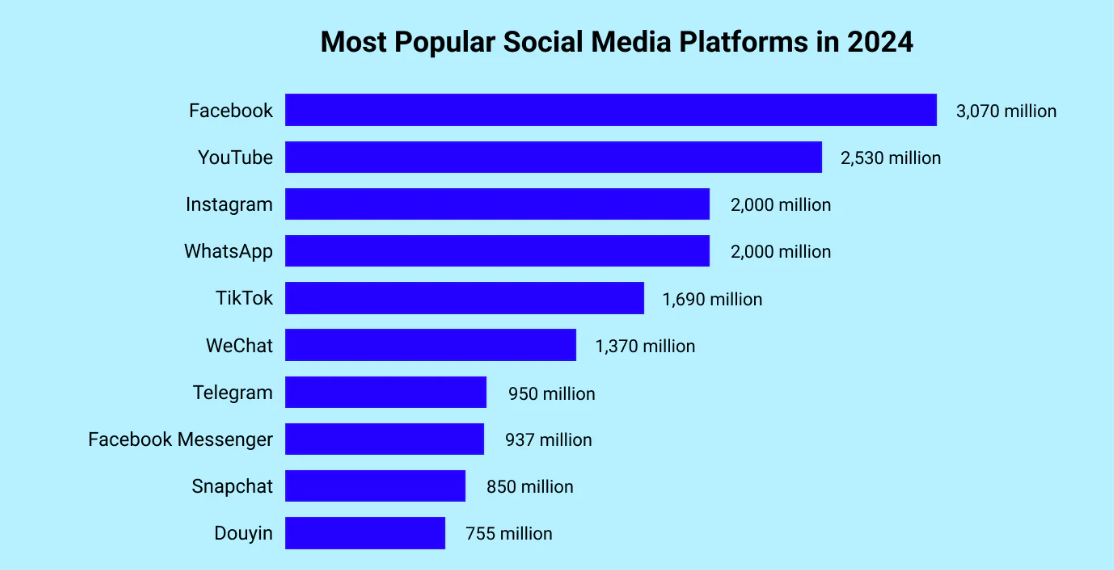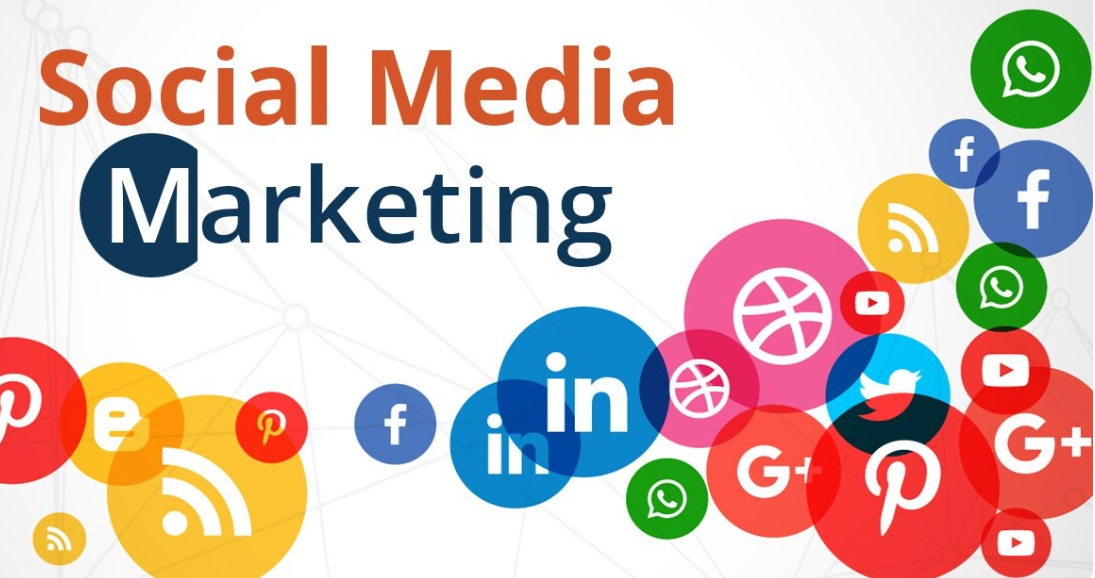The power of social media marketing goes beyond just raking thousands of likes and shares. It is about re-inventing yourself constantly to stay relevant and ahead of the pack. Marketing on social media is about creating a unique and resonant persona that enables you to stand out in a cluttered market.
This article will dig deeper into the web of social media marketing to understand its potential, importance, fundamental pillars, advantages and challenges.
What is Social Media Marketing?
Social media marketing is the usage of social networking platforms such as Facebook, Instagram, TikTok, X (Twitter), YouTube and Google Business where your audience hangs out. The main goals of social media marketing are to raise brand awareness, promote your business, establish your thought leadership, and drive sales and revenue.
Marketing on social media is about forming a connection with your audience through content that resonates with them. Look at it as a way of reaching out to your customers on the online platforms where they hang out. Social media marketers are not just selling products and services but, initiating conversations, building relationships and creating a community around their brands.
Engaging with your community or followers enables you to understand their likes and needs, which helps with tailoring your messages and offers to meet their demands. Social media marketing is about creating meaningful connections that convert casual followers into loyal customers.
Types of Social Media Marketing
Unlike what some marketers may think, social media marketing is not a one-size-fits-all affair. There are multiple ways you can use social media to promote your business. The following are some of the main types of marketing on social media.
Content Marketing
Content marketing refers to the process of sharing blogs, videos, article and other useful content to attract and engage your audience. It revolves around providing valuable information that your followers will appreciate.
Advertising
Running advertisements on social networks such as Facebook and Instagram to reach wider audiences. Those ads can be targeted according to demographics, behaviors and interests of your audience to make them feel more like genuine conversations instead of sales pitches.
Influencer Marketing
Influencer marketing refers to partnering with influencers with a huge following to promote your brand, products and services. Influencers can create authentic content that effectively resonates with your audience and builds trust ion your brand.
Social Media Management
Posting updates regularly, replying to comments and messages and, engaging with your followers to maintain a strong online presence. Check out these essential tips for social media growth in 2025 and beyond.
User-Generated Content (UGC)
UGC is the process of encouraging your social media followers and customers to create content about your products and share it online. The content often serves as reviews from people who have actually used or are currently using your products and services.
Live Streaming
Live streaming refers to using live video to interact with your audience in real time. Social media features like Facebook Live, YouTube Live and Instagram Live allow you to host Q&A sessions, behind-the-scenes looks and product launches.
Top Platforms for Social Media Marketing
Navigating the web of social media marketing means understanding the objectives, audiences and strengths of various platforms. Each platform offers unique ways to interact with your audience. The following are the key players that you should focus on when creating a social media strategy.
- Facebook’s audience has a broad and diverse age range.
- The platform allows you to share multiple content types including posts, stories, videos, ads and events.
- Facebook is best suited for community building, targeted advertising and customer engagement.
- The unique Facebook features include Facebook Shops for social commerce, Groups for niche communities and ad targeting opportunities.

- Instagram mainly appeals to younger and visually driven demographics.
- It allows users to share photos, stories, videos, reels and IGTV
- The platform is best for visual storytelling, influencer marketing and brand aesthetics.
- Instagram’s unique features include Shoppable posts, Instagram Stories for behind-the-scenes content, Reels for short engaging clips and IGTV for long-form videos.
TikTok
- TikTok is home to highly younger demographics.
- It supports short creative videos only.
- The platform is best for viral content, brand challenges and trends.
- The unique features of TikTok include Duets for collaborative content, TikTok Ads for targeted marketing and trending hashtags.
YouTube
- YouTube attracts an audience of a broad and diverse age range.
- The platform allows users to share video content such as vlogs, tutorials and reviews.
- YouTube is best for video content, educational content and brand storytelling.
- The unique features of this platform include YouTube Live for live streaming, YouTube Shorts for short videos, monetization options through ads and sponsorships.
- Pinterest mainly attracts interest-driven females.
- The platform supports Pins (infographics and images) and videos
- It is best for visual content, boosting web traffic, lifestyle brands and DIY brands
- Pinterest’s unique features include Rich Pins for additional context, Shopping Pins for e-commerce, Pinterest Boards for organizing ideas.

There are other platforms can you can also use for social media marketing including LinkedIn and Snapchat. Using the platforms highlighted above strategically means playing to their strengths and understanding where your audience spends most of their time online. Tailoring your content to fit the unique features of every platform can enable you to appeal to their algorithms, thereby boosting your reach and engagement on social media.
Whether you are looking to enhance your reach and engagement on Facebook, Instagram, TikTok, YouTube, X or Google Business, Superior Social Boost offers customized packages to effectively elevate your brand.
Tips for Effective Social Media Marketing
Effective social media marketing is a continuous process that requires you to keep making adjustments to remain relevant and on the first lane. The following tips can help you to ensure successful marketing on social media.
- Set SMART Social Media Goals
While every social media user wants to attract more followers and fans, many businesses find it extremely difficult to reach that goal. Having a proper understanding of your social media goal is essential to improving the decisions that you make going forward. SMART goals means your goals must be Specific, Measurable, Achievable, Relevant and Time-bound.
The following are examples of the most common social media goals;
Increase brand awareness
Do you want to spread the word about your brand? Building brand awareness requires you to create a consistent style, a loyal community and a multi-platform social media strategy. Here are some tips for boosting your social media presence.
- Create a coherent style and an easily recognizable theme
- Use hashtags and create branded hashtags
- Collaborate with influencers and other brands
- Use easily recognizable graphics and editing styles
- Encourage UGC
- Add variety to your content mix
- Share content that adds real value to your audience
Boost customer engagement
Boosting customer engagement requires unique tactics that may even extend to psychology. However, the foundation starts with creating persuasive content that resonates with your target audience and position your brand as an authority in the space.
You should also encourage your audience to follow your brand on every social media platform to increase their frequency of engaging with your content. Here are some ways to streamline social media engagement;
- Creating saved replies to respond to standard comments
- Automating the moderation of your inbox to reduce spam
- Assigning important inbox items for follow-up by team members.
Here’s a short guide on how to make SMART social media marketing goals;
- Specific: Forget about the vague suggestions and clarify exactly what you want to accomplish and why.
- Measurable: Settle on a goal you can quantify such as getting more followers on X, boosting engagement rate percentage or increasing revenues.
- Attainable: Make sure that your objective is possible to reach with the resources that you have.
- Relevant: Ensure that your social media marketing goal relates to the objectives of your business and marketing team.
- Time-Based: Give your team a specific deadline, so you will know how to plan and distribute resources.
- Set Key Performance Indicators (KPIs)
After figuring out the primary goal of your social media marketing, you should establish your most important KPIs. You can set weekly, monthly, quarterly or annual KPIs depending on your deadline and the overall duration. Using your past results as benchmarks is the best way to decide on KPIs. Here are some of the basic KPIs to get you started.
- Reach: How many people can you connect with on social media? You can aim for a specific number such as 25,000 or strive to grow your reach by a given percentage every reporting period.
- Clicks: Clicks are essential if you are looking to drive traffic to your website. Use your web platform’s analytics to determine your conversion rate and the number of clicks you need to get the desired subscriptions or sales.
- Engagement: Social media engagement can take several forms including likes, shares, comments and direct messages. They can help you to test your audience’s interest levels. You can strive for a certain engagement rate or set an overall engagement KPI.
There are several other KPIs that you can also set including hashtag performance, followers, organic and paid likes, impressions, video views, sentiment, mentions, shares and profile visits.
- Know your Audience
You have to get to know your audience to connect with them effectively. You must find out who they are, the topics that interest them and the type of content that resonates with them. Here’s how to get to know your audience.
Audience demographics
Find out whether your audience is mostly local, their ages and job titles. A good social media analytics tool can help you to establish your audience demographics more conveniently.
The Best times to post
You should also dig deeper to establish the times when your audience is most active. This guide can help you to determine the best times to post on social media.
Content preferences
Content preferences refer to the specific types of content that your audience wants. Some may prefer reading text posts, watching videos or clicking links.
- Choose your social media platforms
It is tempting to be on all social media platforms. However, that would only see you waste so much effort for very little gains. There are countless social media platforms and, trying to be present on all of them is overwhelming. Instead, figure out a few social media platforms that best suits your business, brand and goals. That will enable you to maximize your focus and deliver results.

Social media marketing is a multifaceted process that starts with developing a strategy that establishes where you want to go and how you plan to get there. The above insights can help you edge closer to effective social media marketing in Kenya and beyond. If you need help with driving your brand’s presence and reach on social media, do not hesitate to engage Superior Social Boost. We assist brands and businesses to drive social media engagement organically on Facebook, X, Instagram, TikTok, YouTube and Google Business.

